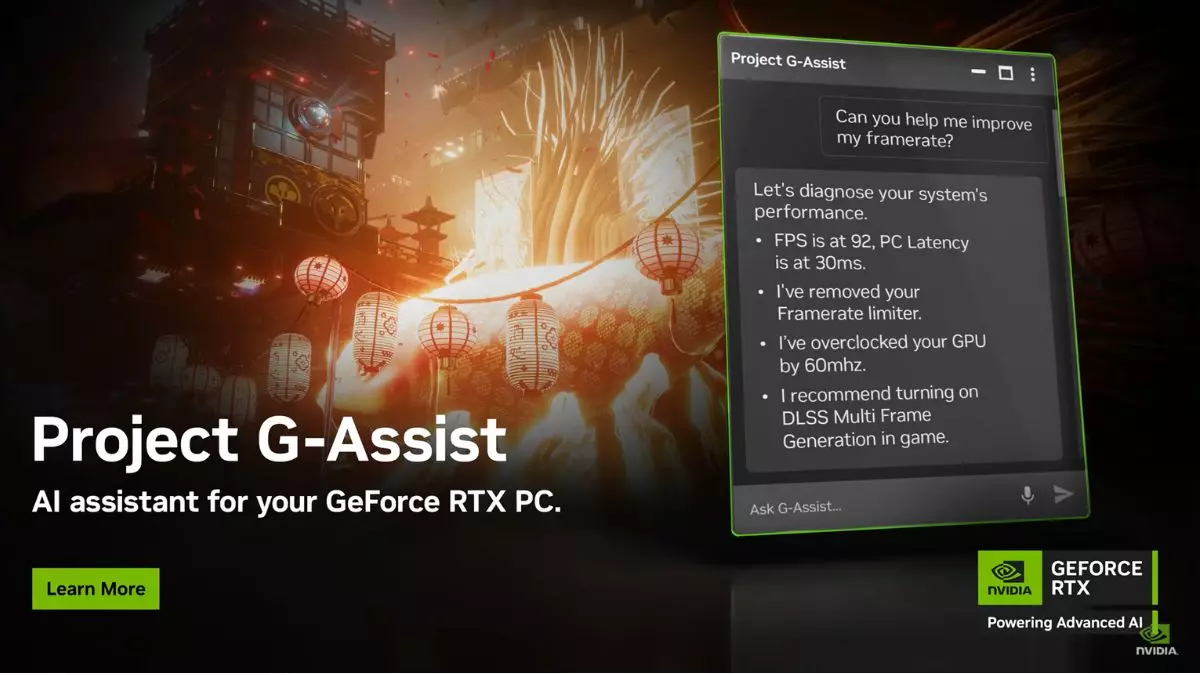Nvidia’s recent introduction of Project G-Assist marks a pivotal moment in the intersection of artificial intelligence and home gaming. By incorporating a locally-run AI assistant into desktops powered by GeForce RTX GPUs, Nvidia has set a new standard for personalized gaming experiences. Unlike previous AI systems that rely heavily on cloud technology—often fraught with privacy concerns and latency issues—G-Assist offers gamers a streamlined and autonomous experience. This shift not only safeguards user data but also allows for near-instantaneous interaction, enhancing the overall gaming experience in a way previously thought unattainable.
The Freedom of Localized AI
One of the most compelling aspects of Project G-Assist is its unique architecture. The fact that it runs locally on a single RTX GPU signifies a departure from the conventional reliance on cloud servers. This localized approach is more than just a technological upgrade; it embodies a philosophy of reclaiming control over one’s data. In a time when digital privacy is increasingly at risk, Nvidia’s decision to prioritize user security by keeping data processing internal is refreshing and necessary. Gamers can now enjoy enhanced capabilities without the anxiety that often accompanies cloud-dependent systems.
Personalization at Its Best
G-Assist is not just another AI chatbot; it’s a personalized assistant designed specifically for gamers. The capability to interpret natural language commands creates an intuitive platform for interaction and experience optimization. Whether it’s adjusting in-game settings, diagnosing issues, or controlling peripheral devices, G-Assist fundamentally changes how gamers interact with their systems. This feature is especially beneficial for the gaming community, as it opens doors for fine-tuning performance in real-time—something that has traditionally required extensive technical knowledge.
Gaming Intelligence and Feedback
In a landscape where performance can make or break gaming experiences, G-Assist’s ability to analyze replays of multiplayer games and provide actionable feedback is another groundbreaking feature. Imagine being able to dissect your gameplay through AI-powered insights, honing your skills with tailored strategies based on past performances. This depth of feedback ensures that gamers aren’t just playing but are evolving, a necessity in today’s competitive environment.
Future Implications for Gaming
As Project G-Assist continues to evolve, it poses significant implications for the future of gaming. The potential to integrate AI-driven technology into standard gaming setups could lead to entirely new genres and styles of play. Developers are likely to take note, designing games that can interactively leverage AI assistance as part of their core mechanics. This could transform the gaming landscape into an ecosystem where human-computer collaboration enhances not just performance but also creativity.
The implications of Nvidia’s Project G-Assist extend far beyond mere technical specifications; they signify a thoughtful step towards enriching the gaming experience while maintaining user privacy. While it may still be in experimental stages, the groundwork it lays is significant, hinting at a future where AI plays a central role in how we engage with digital worlds. As this trend matures, we can expect a transformation where gaming is not just an escape but a collaborative venture between humans and technology, fostering deeper connections within the gaming community.


Leave a Reply